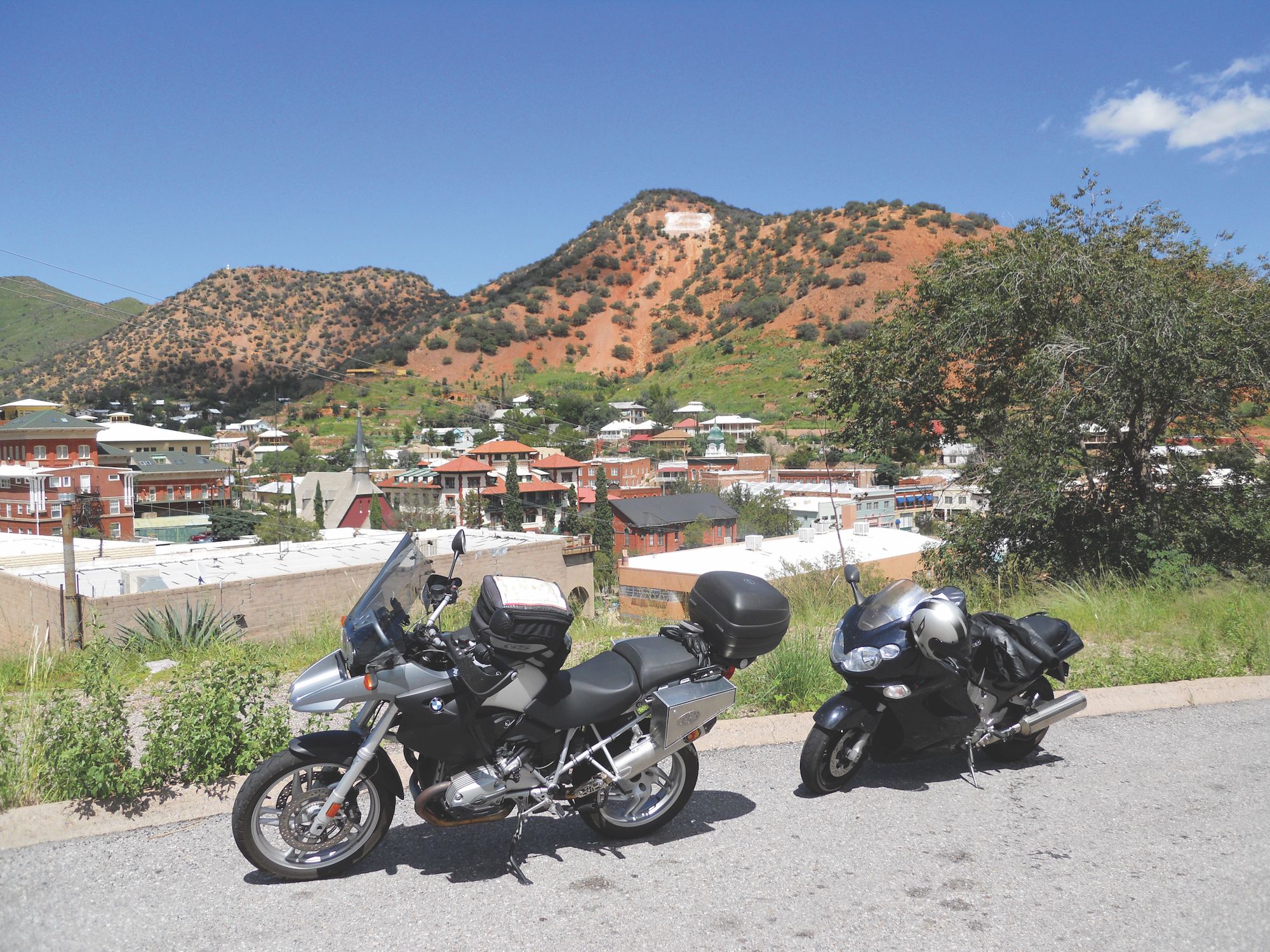Arizona and New Mexico: Southwestern Diversity

“To those devoid of imagination a blank place on the map is a useless waste; to others, the most valuable part.” Author, Aldo Leopold As motorcyclists, we are by nature attracted to the lines and dots on a map. However, those blank places that Leopold referenced are what make a tour visually stunning. Thankfully we don’t have to make a choice. In the American Southwest, the map lines, dots, and blank places are all breathtaking when experienced in the flesh. The Southwest contains arguably the most diverse mix of climates, elevations, and ecosystems on the continent.
As my wife, Cheryl, our 24-year-old son, Tim, and I load our luggage with the requisite array of riding gear, we know full well that this route requires preparedness. My wife and I will be two up on a BMW R 1200 GS and Tim Jr. will be solo on a Kawasaki ZZR 1200. Comfortable that we have done our due diligence, we embark on a 730-mile loop that will include some great towns and amazingly varied terrain in Arizona and New Mexico. We are ready to sample the full spectrum of this region’s striking diversity on our late summer adventure.

A Taste of the Wild West
Tucson, AZ, is the natural starting point for our sampling of what the Southwest has to offer. “The Old Pueblo” is a modern city with a deep history and a vibrant cultural blend. Tucson sits in one of the most spectacular portions of the Sonoran Desert. It is surrounded by several rugged, gray mountain ranges and impressive “forests” of towering saguaro cacti. Being a thriving city of over a half a million, it has a major airport and easy access to motorcycle rentals for out-of-towners.
Motorcycles & Gear
2003 Kawasaki ZZR 1200
2007 BMW R 1200 GS
Helmet: Arai Vector-2, AGV S-4
Jacket: Dainese D-System with CE Back Armor, Fieldsheer CE Armor Leather
Pants: Alpinestars CE Armored Rodeo Denims
Boots: Sidi Tour GORE-TEX, Sidi Vertigo
Gloves: BMW ProSport 2, Alpinestars SP-2
Luggage: Factory BMW Tankbag, Givi Traffic II Tailbag, Custom Aluminum Panniers, Teknic Magnetic Expandable Tankbag
The first leg is dotted with historically significant small towns. Leaving Tucson, we traverse one of only two short stretches of freeway on our route. After a short jaunt on I-10, we jump on the AZ 80 and head south. There is no doubt that we are approaching Tombstone, AZ. Billboards promising gunfights and saloon girls pop up on the desert horizon like the dollar signs on an old-time cash register.
After a ride through a smorgasbord of cacti and desert foliage, we dismount our iron horses in the shadow of the original O.K. Corral gunfight site in Tombstone. It is a surreal sight. Tourists in cargo shorts armed with cameras walk along side characters in period costumes armed with Colt revolvers. It just so happens we’re also here on the day of a steampunk parade, which adds another layer to the surrealism. For the uninitiated, steampunk is a quirky visual blending of the modern and archaic. Enthusiasts combine stylized and modernized steam-era machinery and tools with equally altered period costuming. The anachronism is somehow perfect for the scene.

Now, I must admit that I am not usually a fan of packaged and commercialized “history.” However, it is thoroughly enjoyable walking the streets of one of the most well-known historic towns in the Southwest. Our stay includes lunch at Big Nose Kate’s Saloon on the main street (Kate was a lady-of-the-night and Doc Holliday’s girlfriend). We round out our visit talking to some of the character actors and trying to picture Tombstone as it was in 1881 when Wyatt Earp and Doc Holliday pulled their pistols in that famous gunfight.
Beyond Tombstone, it is only a 25-mile hop to another historic southern Arizona town. This stretch takes us into the region’s high desert mountain ranges and some exhilarating sweeping turns. The riding is both visually and viscerally exhilarating here. Rock cliffs flank the well-paved path to Bisbee.

Bisbee’s notoriety comes from its large-scale copper mining. At the turn of the century, the area’s open-pit mining changed the economic and natural landscape of the Southwest forever. While Tombstone has survived by promoting and reenacting a 30-second gunfight, Bisbee has had to find other means of survival. It has become a thriving and eclectic arts and crafts hotbed. It has not hurt the town’s tourist draw that it sits in the midst of crimson cliffs and rugged beauty. For us, after a latte and an ice cream cone in the town’s historic district, it is time to head farther south.
On the way out of Bisbee, the Lavender Pit is virtually impossible to miss. It is a vast mining “reconstruction” of the earth. It is both awe-inspiring and a bit disturbing. The 300-acre terraced pit is a testament to man’s ability to engineer on a massive scale. However, it is also a shrine to our willingness to irrevocably manipulate the earth to our own specific needs. The rich palette of colors and the mined stair steps make for a kind of melancholy beauty.
